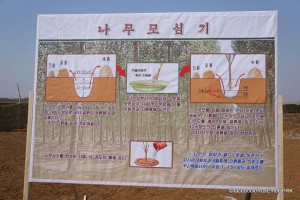By Benjamin Katzeff Silberstein
Yesterday I stumbled upon a nice interactive World Bank data map that shows where forests have been lost and gained since the 1990s. Forestry is one of those rare areas where fairly extensive data exists for North Korea. Of course, all data has its faults and flaws, and figures on North Korea should always be taken with a grain of salt. But even if the figures aren’t fully correct to the last decimal, they show an interesting trend.
The World Bank World Development Indicators figures seem to be coming from the Forest and Agriculture Organization (FAO)’s Global Forest Resource Assessment, and their latest study of global forestry assets was done just last year (2015). Using these figures, I created a graph showing North Korea’s forestry area (in blue), using South Korea as a baseline comparison.
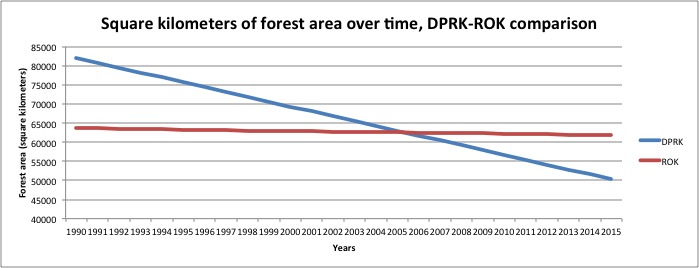
Data source: World Bank World Development Indicators. Graph created by Benjamin Katzeff Silberstein.
Deforestation is far from a new problem in North Korea. What’s interesting is that it appears to continue without signs of abating.
This data stretches all the way to 2015. According to one estimate, North Korean forests shrank by about 17 percent between 1970 and 1990. By the end of 2008, the United Nations estimated that around one third of all forests had been lost in North Korea. If the World Bank data is accurate, it suggests that this trend has continued exponentially, and that the situation has continued to worsen. According to the World Bank data, North Korea lost almost 40 percent of its forests between 1990 and 2015.
As this blog has laid out before, the cycle of problems is well known: people essentially cut down trees as a form of coping behavior in the face of resource scarcity, in order to clear areas for farmland, and to use wood as an energy source. When the annual torrential rains sweep over the Korean peninsula, the lack of trees contributes to soil erosion, spoiling harvests and causing devastation. Kim Jong-un highlighted forestry as an important policy area in 2015. The priority makes a lot of sense, but so far, the solutions don’t seem all that promising.
North Korea celebrated a “Tree Planting Day” about three weeks ago, and the Russian embassy in Pyongyang participated in the celebrations. Their pictures (see this link for their Facebook album) give an interesting snapshot of how it might look across the country as the regime’s tree planting drive unfolds:
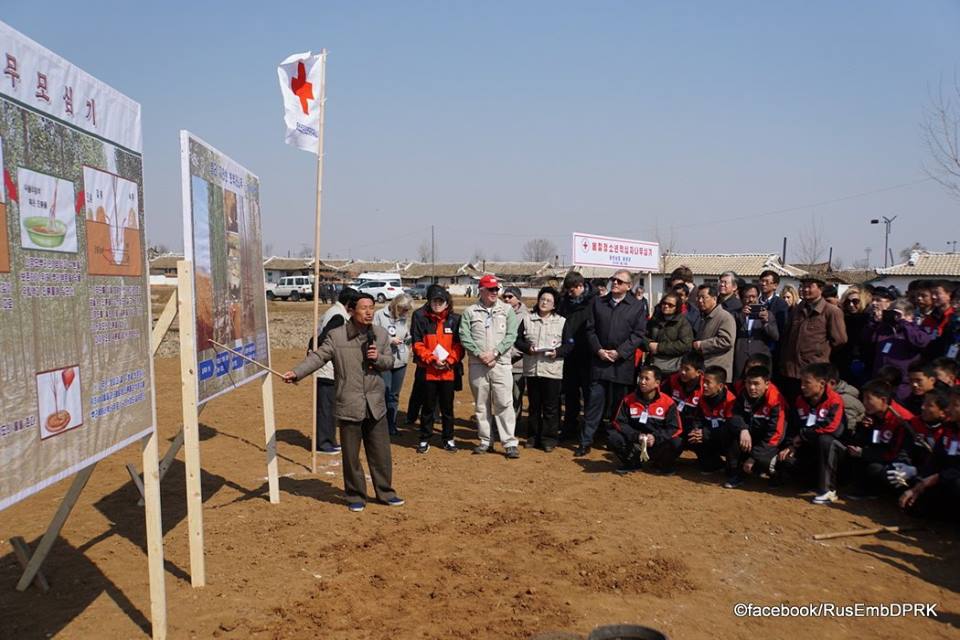
A North Korean forestry official (?) giving instructions about tree planting. Photo credits: Russian embassy in Pyongyang.
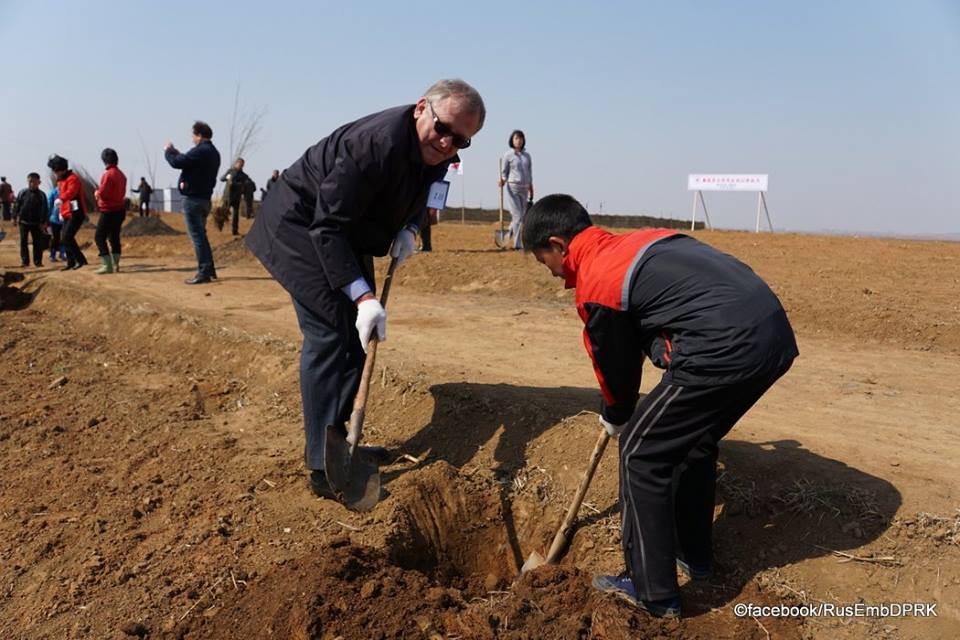
The Russian ambassador and a young North Korean planting a tree together. Photo credits: Russian embassy in Pyongyang.
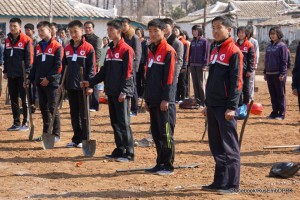
Young North Korean men in Red Cross (적십자) vests lining up for tree planting. Photo credits: Russian embassy in Pyongyang.
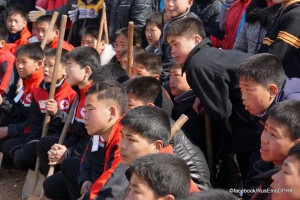
Young North Koreans listening to tree planting instructions. Photo credits: Russian embassy in Pyongyang.
